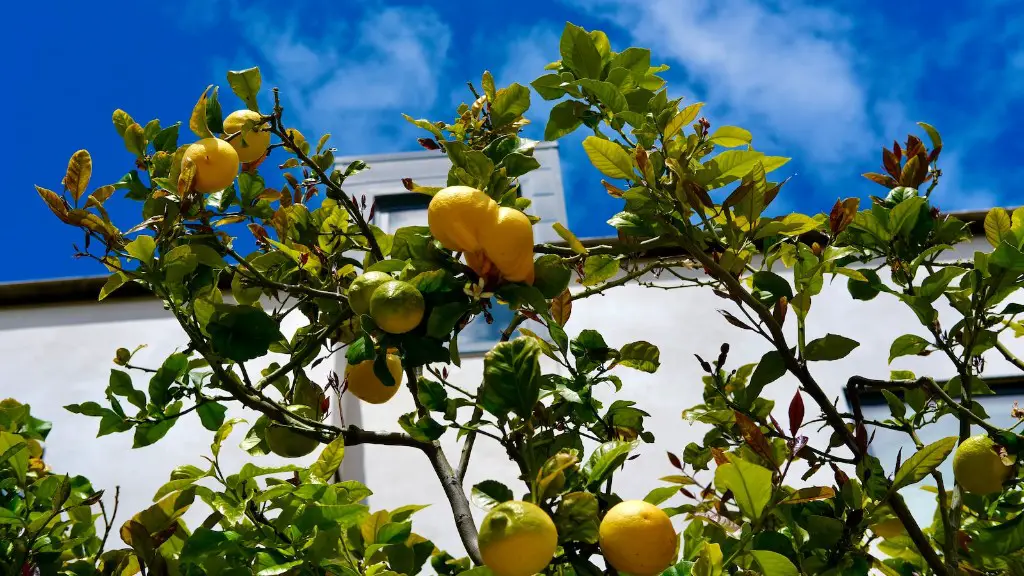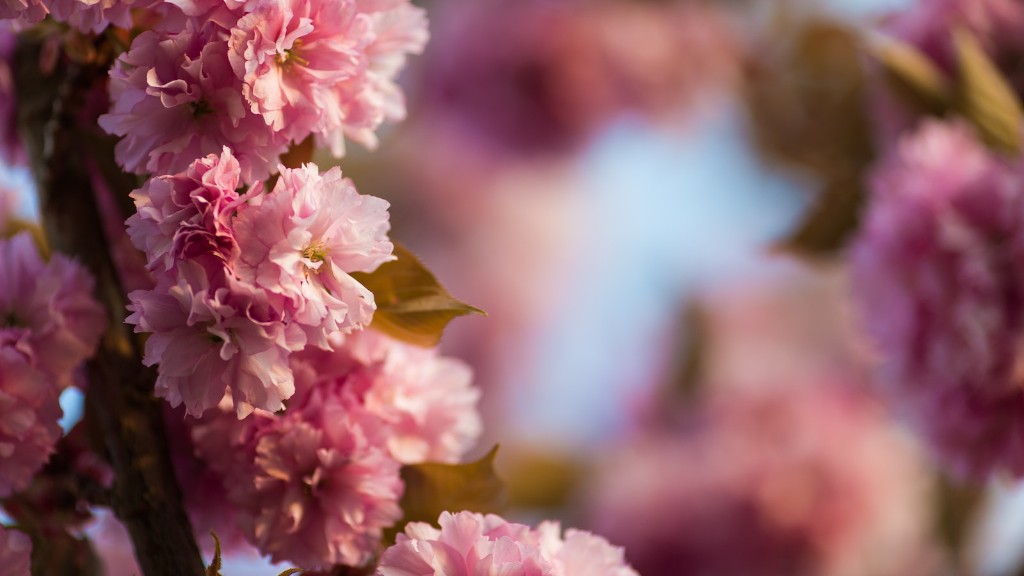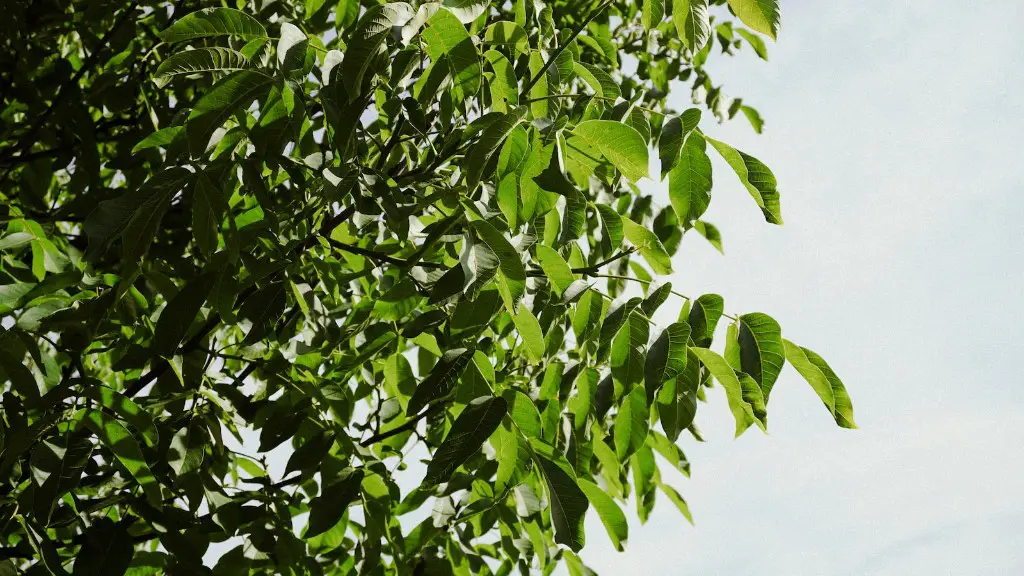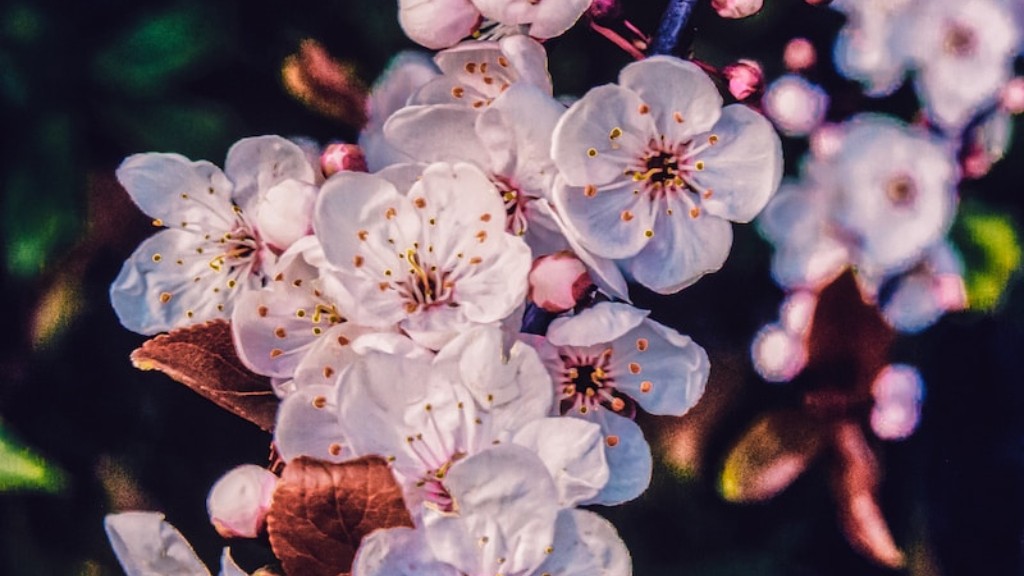Why isn’t My Lemon Tree Producing Lemons?
Consistently producing lemons on a lemon tree is never a guarantee, even under optimal conditions. In some cases, a lemon tree may set fruit only to drop it suddenly, or it may not bloom at all. If your lemon tree isn’t producing lemons, there could be numerous factors at work. The key is to identify the cause and try to resolve it.
A lemon tree needs plenty of light, preferably full sun, in order to be healthy and productive. If your tree isn’t in the right location, its blooms and fruit may be affected. It’s important to move the tree to an area that has around 8 hours of direct sunlight every day if possible. If that isn’t feasible, you can also consider adding supplemental light with grow lights.
Inadequate water is another common problem for trees not blooming properly. Lemons trees need a steady supply of wet soil. If the tree’s soil is too dry between watering, the plant may not be getting the water it needs. The amount you water often depends on your climate and how much sun your tree gets, but it’s important to water every few days or even every day during the hotter months.
Lemon trees older than 4-5 years may become dormant if their environment isn’t well-suited to them. If your tree hasn’t had an adequate root system over a period of time this can lead to a dormancy period. Another cause could be too high a level of nutrients in the soil, which can prevent flowering from taking place. To test this, you could look into soil testing.
Temperature also plays a role in blooming. Many types of lemon trees can’t tolerate temperatures below 40 degrees Fahrenheit for more than a few days at a time. If you live in a colder climate, the tree may be having difficulty setting fruit due to prolonged cold spells. In this case, you may need to wait until the weather warms up before seeing the tree bloom normally again.
Finally, the most common cause of no lemons is simply that the tree isn’t getting enough pollinators, or the right amount of pollinators. If your tree isn’t blooming, it may not be getting the pollen it needs to produce. Introducing activity from pollinating insects can help with pollination, as well as using a paintbrush to move the pollen from flower to flower.
Not Enough Light
Lack of light is one of the most common reasons trees fail to produce lemons. To ensure your lemon tree produces lemons, it must have 8 hours of direct sunlight each day. Placing your lemon tree in a sun-filled location is key for achieving a good harvest. If you can’t move the tree to a sunnier spot, then you can try using supplemental light with grow lights. That way, your tree will still receive the necessary amount of sunlight it needs to thrive.
Careful consideration should also be taken when planting the tree. planting a tree too close to the walls of a home or a fence won’t allow it to receive enough sunlight. Trees grow in the direction of the light, that’s why you should ensure your lemon tree has plenty of space to grow and spread its branches.
Be mindful of trees or other plants close to your lemon tree. Some trees such as the oak tree have a large denser canopy and this doesn’t allow enough light to reach your lemon tree. If you find that too much shade is falling on your lemon tree, prune some branches or plant your tree in a different location.
The kind of soil you use when planting the tree can also impede sunlight. If you’re planting in clay soil, it is naturally thick, meaning that the water stays in the soil and the sun doesn’t reach the tree’s roots in sufficient amounts.
In addition to ensuring enough sunlight, fertilizing will benefit your tree in the long run. Fertilizing and pruning your lemon tree on a regular basis to promote better plant health will ensure that it grows more abundant and healthier fruit.
Inadequate Water
To have a successful lemon tree, it is important that the tree receives enough water. If the tree isn’t getting enough water, it won’t be able to produce fruit. Here are some tips for watering your lemon tree:
Appropriate watering of the tree must be done on a regular basis. Watering needs to be adjusted according to the climate and the amount of sunshine the tree receives. In general, lemon trees need to be watered at least two or three times a week, especially during the warmer months. Adjust your watering schedule as needed.
It’s also important to use a soil with good drainage. If your tree is in a poorly-drained area, the water won’t penetrate the soil and the tree’s roots won’t be able to absorb it. The best soil for a lemon tree is a well-draining soil with plenty of organic matter.
Finally, mulching around the tree isn’t just a great way to protect its roots from weeds, but it also helps to retain moisture in the soil. Mulch can also regulate the temperature of the soil, which is important for plant health. Make sure to use mulch that is made from organic materials.
A lack of water can cause lemon trees to become stressed and weakened, resulting in fewer blooms and smaller fruits. Therefore, it is important to monitor the tree’s watering needs carefully and make sure it is getting enough water in order to ensure the best possible harvest.
Lemon Tree Dormancy
Lemon trees may enter a dormant period if their environment is not well-suited to them. Trees that are older than 4 or 5 years may become dormant if they haven’t had an adequate root system over a period of time, or too high a level of nutrients in the soil can prevent flowering from taking place.
The best way to prevent a dormancy period is by proper tree care. This includes giving the tree enough sun, water, and nutrients. Also, adding mulch around the tree’s roots is a great way to retain moisture, control weed growth, and ensure that the tree receives adequate nutrients. Adjust your watering schedule according to the tree’s needs and provide sufficient sunlight for 8 hours a day.
Another preventative measure for a dormancy period is to make sure the soil is healthy. Regular soil testing is a good idea so that you can be sure that the tree is getting enough nutrients in the soil and that the pH level is adequate for lemon production. Additionally, pruning the lemon tree on a regular basis helps to promote healthier, more robust blooms and fruit.
Of course, if your lemon tree has been dormant for a while, it may take some time for it to wake up again. Be patient and take good care of your lemon tree, and eventually it should come back to life.
Temperature Factors
Temperature plays an important role in a lemon tree’s productivity. Many types of lemon trees can’t tolerate temperatures below 40°F for more than a few days at a time. In colder climates, cold spells can cause the tree to go dormant and delay blooming. If your tree hasn’t bloomed in the cold weather, wait until temperatures warm up before expecting it to start blooming again.
If you notice a sudden drop in temperature, it’s best to cover your lemon tree with a blanket or sheet to help keep it warm. You can also use a heat lamp to supplement the light. Make sure that the tree isn’t exposed to extreme temperatures or winds, as this can weaken the tree and prevent it from producing fruit.
In both hot and cold climates, it is important to regularly check the tree for signs of distress and take measures to protect it. This can include pruning, giving it enough water, and shielding it from extreme temperatures. If you take good care of the tree, you can encourage it to start producing more lemons.
In addition to extreme weather conditions, dampness is also a concern for lemon trees. A damp winter can negatively impact the tree and impede the production of lemons. If your tree is exposed to too much moisture, you may need to provide some shelter for it or move it to a more suitable location.
When it comes to temperature, it is important to be mindful of the potential harm it can cause to your lemon tree if temperatures are too extreme. An extreme temperature change can cause a tree to go dormant, meaning that it will take some time for the tree to get back to normal and start producing lemons again.
Pollination Problems
Pollination can also affect the production of lemons. If your tree isn’t getting enough pollinators, it may not be setting fruit. Introducing activity from various pollinating insects will help with pollination, or you can try using a paintbrush to move the pollen from flower to flower.
It is important to note that some trees need cross-pollination to set fruit. If your tree is not getting the right type of pollinators or enough of them, you may need to find another tree that is compatible with your lemon tree and introduce it to help facilitate the pollination.
It is also possible that your tree simply isn’t producing enough sepal and pistil on the blooms. Sepal and pistil are the reproductive organs of plants. If there are not enough of these organs, the flowers will not be able to produce pollen for fertilization. Pruning your tree and fertilizing can help it produce more of these organs.
Lastly, high winds can displace the pollen and make it difficult for the tree to produce fruit. If the tree is exposed to a lot of heavy wind, you may want to find ways to reduce the wind exposure. Keeping the tree protected from the wind can help it get the necessary pollen to set fruit.
In conclusion, there are many factors that can contribute to a lemon tree not producing lemons. Lack of sufficient light, inadequate water, dormancy and temperature changes, and pollination problems can all inhibit fruit production. Be sure to pay attention to your tree’s needs and take the necessary steps to ensure it is healthy and able to produce fruit.



